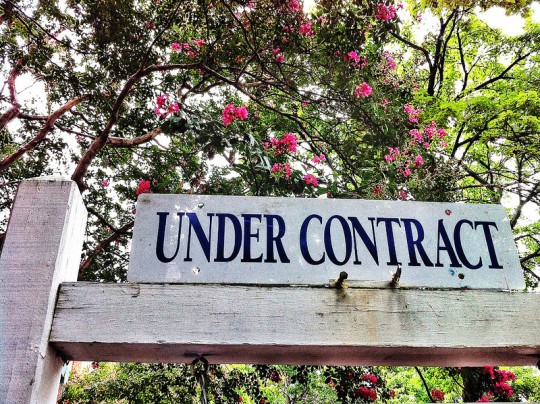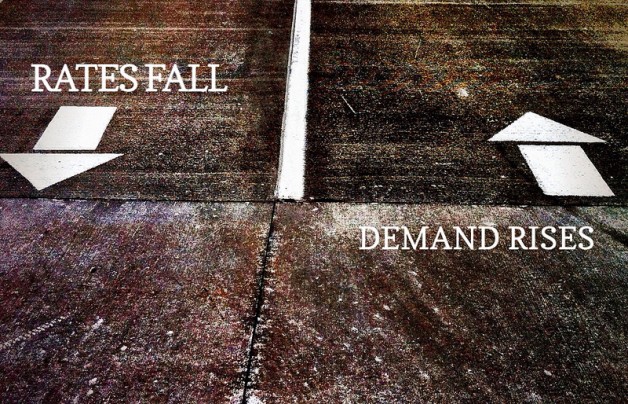The National Association of Realtors’ Pending Home Sales Index is a forward-looking indicator that tracks the number of buyers who signed contracts to purchase homes during the month. In August, the Index showed a 1.6 percent dip from July, when it reached a six-and-a-half year high. Lawrence Yun, NAR’s chief economist, said the decline was expected following the sales peaks reached during the summer-selling season. According to Yun, existing-home sales levels should slow in the coming months. Despite the dip, pending home sales have been above year-before levels for 28 consecutive months and were 5.8 percent above August 2012 in the most recent report. Regionally, sales fell in the Midwest, South, and West but rose 4 percent in the Northeast. The National Association of Realtors expects existing-home sales to be up nearly 11 percent this year. More here.
Archive for September 2013
Buying A Home Still Cheaper Than Renting
Despite recent increases in home prices and mortgage rates, buying a home is still cheaper than renting, according to Trulia’s Summer 2013 Rent Vs. Buy Report. The report, which compared the average cost of renting and owning a home in America’s 100 largest metropolitan areas between June 1 and August 31, found homeownership is now 35 percent cheaper than renting. That’s down from last year when buying a home was 45 percent cheaper. Jed Kolko, Trulia’s chief economist, said, though rising mortgage rates and home prices have made buying less affordable than last year, they’re both still below historical norms. According to Kolko, mortgage rates would have to reach into double-digits before renting became cheaper than buying. The report found that homeownership was more affordable than renting in all of the largest 100 cities surveyed. San Jose, San Francisco, Honolulu, Orange County, and New York were the metros where the associated costs between renting and buying were closest. More here.
Economic Confidence Improves Despite Uncertainty
After nearly reaching positive territory in early June, Americans’ confidence in the economy has been on a downward trajectory, according to Gallup’s Economic Confidence Index. In recent weeks, economic confidence has been negatively impacted by the crisis in Syria, stagnant job growth, upcoming negotiations over the federal debt limit, and uncertainty over the Federal Reserve’s bond-purchasing program. Still, the most recent reading found a small improvement from previous weeks. According to the index, 40 percent of Americans now say the economy is getting better rather than worse, with 19 percent rating the economy as excellent or good and 36 percent saying it is poor. Gallup notes that Americans have generally been more confident in the economy this year, though they are still more negative than positive in their assessment of current conditions and the economic direction.
New Home Sales Rebound In August
Sales of new single-family homes spiked in August, according to estimates released by the U.S. Census Bureau and the Department of Housing and Urban Development. Sales were up 7.9 percent above July’s rate and 12.6 percent above last year’s estimates. The improvement is a welcome change following a nearly 14 percent plunge in July, which was the largest drop in more than three years. And, though August’s estimates fell slightly below economists’ expectations, the late summer lull has been caused by temporary factors, according to analysts. Merrill Lynch, for example, is forecasting that builders will sell 438,000 new homes this year and that sales will rise by more than 20 percent next year. The government report also showed that the median sales price of new houses sold in August was $254,600; the average sales price was $318,900. There is a 5-month supply of new homes available for sale at the current sales rate. More here and here.
Mortgage Demand Increases As Rates Fall
According to the Mortgage Bankers Association’s Weekly Applications Survey, demand for mortgage loans was up 5.5 percent last week from the week before. The increase included a 7 percent spike in demand for purchase loans and a 5 percent gain in the number of people requesting applications to refinance their home. The Purchase Index was at its highest level since July. The survey also found the average contract interest rate for 30-year fixed-rate mortgages fell again last week for all loan types. But despite the drop in rates, the refinance share of total mortgage activity was unchanged from the previous week at 61 percent. The survey, which the MBA has been conducting weekly since 1990, covers 75 percent of all U.S. retail residential mortgage applications. More here.
Home Prices Rise, Though Rate Of Increase Slows
The S&P/Case-Shiller Home Price Indices, considered the leading measure of U.S. home prices, showed values continuing to improve in their latest release. The report found that prices rose more than 12 percent from last year in both the 10-city and the 20-city composites. The 20-city composite index also saw month-over-month gains for the fourth consecutive month, though the rate of those gains slowed in July as compared to June. David M. Blitzer, chairman of the index committee at S&P Dow Jones Indices, said that, though all 20 included cities are up month to month, more cities are experiencing slower gains each month, which suggests the rate of price increases may have peaked. Also, Blitzer believes housing will see a limited, though favorable, impact due to the Fed’s announcement that they will continue their bond-buying program. More here and here.
Continuation Of Fed Program Alters Rate Forecast
Federal efforts to support the ailing economy and strengthen the housing market began in 2009. The effects of these efforts have kept mortgage rates down and housing affordability high, resulting in a rebounding market and increasingly healthy economy. Because of this, expectations that the Federal Reserve would begin winding down its bond-buying program, have led to an increase in mortgage rates and forecasts of a coming economic slowdown. But, despite indicating the program would be cut back by the end of this year, the Fed recently announced it would continue the program and insisted there is no preset course or schedule for ending the purchases. Analysts expect that the continuation of the program will result in a break from the increases in mortgage rates seen over the past few months. More here and here.






